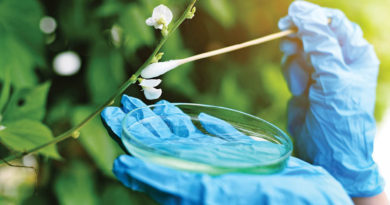Best Way To Ensure Safety
We all know the health benefits of using cannabis products for a wide range of ailments as well as for winding down and relaxing. But what if your cannabis is actually making you sick because it’s covered in pathogens indiscernible to the naked eye? Fortunately, you may never need to find out the answer because of cannabis remediation. A high-quality cannabis remediator can ensure product quality and help protect your health.
Almost every crop sold on the market goes through a remediation process to make it safer for consumption and cannabis is no different.
Pathogens and contaminants can be unknowingly introduced to any batch of cannabis at any stage of growth or processing. However, most occur because of improper preparation or storage of cannabis products. Harvesting cannabis while it is still wet or drying/storing it in a wet and humid environment is one of the main ways that fungal infections like powdery mildew or botrytis can be introduced. Wetness can also lead to pest infestations.
Email Newsletter
Join thousands of other growers who are already receiving our monthly newsletter.
As much as 20% of all the cannabis grown commercially is contaminated in some way, whether as a result of biological or man-made pollutants. There are at least 88 different disease-causing fungi that can attack cannabis.
One of the most popular ways of decontaminating cannabis without destroying the flowers is by using Rad Source’s Photonic Decontamination technology.
Cannabis is also susceptible to many other phytopathogens. While many of these do not cause direct harm to humans, they are known to affect immunocompromised individuals that consume cannabis infected with these plant diseases.
On the flip side, remediated cannabis poses no danger to anyone anymore.
The Hidden Dangers of Contaminated Cannabis
Contaminated cannabis is especially harmful (even fatal in some cases) for immunocompromised individuals and pediatric patients who use medicinal marijuana. Remediation helps make the cannabis experience and benefits safer for all individuals who consume it.
While it’s impossible to know the full extent of the toxic effects causes by contaminated cannabis, there have been numerous documented cases of deaths and illnesses.
Along with the reported deaths, there have also been reports of tainted cannabis causes heart attacks, brain infarctions, various infections, psychomotor changes, lung and breathing issues, along with several types of cancers.
Lesser, but nonetheless serious side effects of contaminated cannabis include headaches and coughs. Even dead pathogens can cause a negative effect in consumers. Asthma and allergy problems have been found among some individuals as a result of consuming cannabis contaminated with dead microorganisms.
While small-scale commercial growers send their cannabis flowers batch-by-batch to remediation centers, larger scale operations usually do their remediation on-site, with decontamination systems, such as Rad Source’s Photonic Decontamination technology.
In either case, any grower who produces cannabis with the intent to sell it needs to have their crop undergo some version of remediation to make it safer for the public. In many U.S. states, cannabis remediation is also mandatory in order to be in compliance with regulations.
Some of the most current and effective remediation treatments on the market today use technology that penetrates the entire flower without touching it.
Rad Source’s Quastar Photonic Decontamination boasts a reduction of microbial contaminants to 99.9% without effecting any of the cannabis qualities or characteristics, including appearance of the flower. It works by deactivating the microbial growth and breaking down the DNA to stop their spread and reproduction.
Some types of contaminants such as heavy metals are easily absorbed in field-grown cropping and can be remediated by of the methods. Heavy metals consumption by cannabis users is of great concern because metals can accumulate over time in the body. Of most concern are nickel, cadmium, lead, and arsenic, all of which can be transferred from cannabis to humans upon consumption if it isn’t thoroughly remediated.
For its part, biological contaminants like mycotoxins, molds, mildews, and other harmful microbes are treated with cannabis decontamination systems.
To further ensure consumer safety, cannabis remediation also requires that all crops found to contain any contaminants be remediated and tested again. If a batch fails after a second test, the product is not allowed to be sold. Proper cannabis remediation can help maintain and ensure product quality and help protect public health and should be continued to expand as more states and regions allow for the sale of cannabis to the public.
Apart from metal and biological contaminants, cannabis quality and purity can be compromised if it comes into contact with pesticides and fertilizers that are improperly remediated.
Any amount of pesticide found on cannabis at rates over 10 parts per billion (ppb) needs to be remediated. Additionally, carcinogens or debris from the field or grow site can be found on some cannabis crops, all of which much be eradicated to ensure the cannabis is safe for consumers to use.
Whether a grower or producer remediates their flower by extracting it into a concentrate or whether they are able to keep the flower intact and treat it as a whole, proper remediation keeps cannabis safe for consumers. Each remediation method retains all of the terpenes and concentration levels that both producers and consumers look for in their products of choice.
For more information please visit: Radsource.com.




